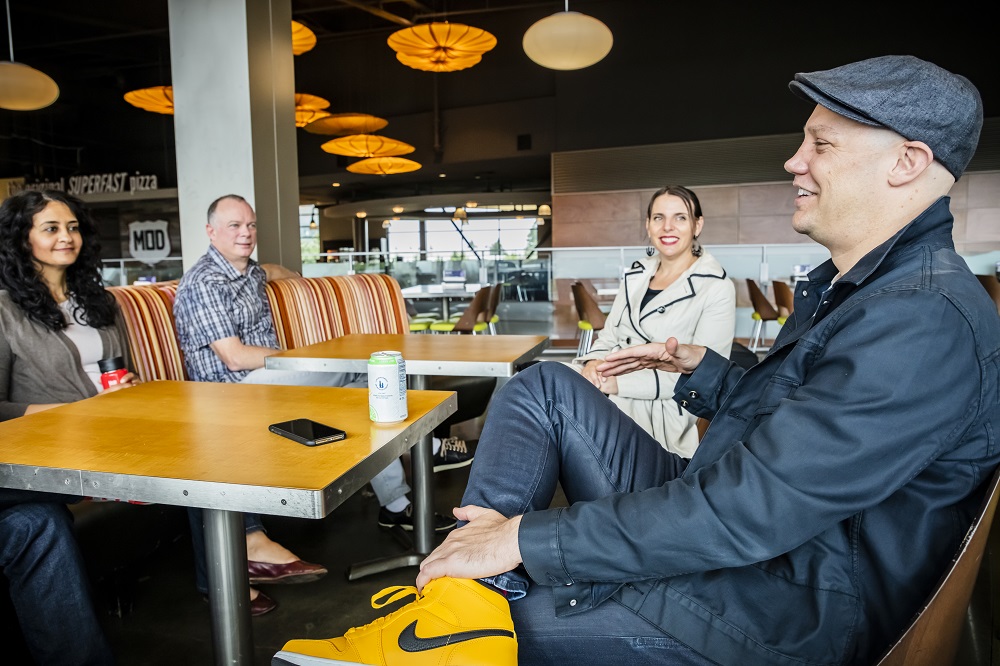
‘This is who I am’: How a top manager opened up about his mental illness and found compassion
As the senior director of communications for Microsoft Azure and Business Applications, Craig Cincotta has a busy, demanding job. But amid his many meetings, events and long hours of work, he always finds time to meditate, exercise, get enough sleep and carve out a life-work balance for himself and his team.
The approach has enabled Cincotta, a Microsoft veteran of 11 years, to flourish as a vibrant leader. But it took a while to hone his formula for success, a process that stemmed from his treatment for an obsessive-compulsive disorder and a generalized anxiety disorder diagnosed six year ago.
As a child, Cincotta had always felt a little different, with his careful attention to details and quirky routines. As an adult, he poured his details-oriented energy into a thriving career. But by 2013, the anxiety that had always loomed in the background swelled into daily, debilitating panic attacks that struck without warning. As director of communications for Xbox at the time, Cincotta took a two-month leave to get help with cognitive behavioral therapy (CBT), meditation and medication.
Like other people with mental health disorders, he could have hidden his diagnosis and treatment, but Cincotta wanted to be open and share his experience. He first told his manager; then he told his team.

Craig Cincotta (right) talks with former and current team members (from left) Hanady Kader, Greg Sullivan and Annie Spencer.
“The first time you disclose is the scariest one, because you have to take a leap of faith to trust that people won’t judge you,” Cincotta says. His colleagues responded with compassion and support, and many people, from senior executives to people he managed, shared their own struggles with mental well-being. In his vulnerability, he learned he was not alone.
“I was very lucky that I had a manager and people who were open and not scared off from having very real conversations with me,” he says. “It made me be the most authentic person I could be, and I think one of life’s great gifts is when you can be your most authentic self. This is who I am.”
Cincotta returned from his leave a stronger manager, with greater empathy and perspective. He continued to share his disability while his career grew, with stints as a senior leader at a startup and a communications teacher at the University of Washington in Seattle. He then returned to Microsoft to lead communications for HoloLens.
Anytime you have a more inclusive environment, you’re able to see fresher ideas, broaden your perspective and get the best version of people.
In 2016, Cincotta shared his disability more broadly when he wrote about his mental disability in a column for Entrepreneur. He had struggled in silence for years — enduring frightening panic attacks at work, in the car, late at night — and wanted to help others who were struggling alone. He told them it’s OK to get help. He wanted to destigmatize disability.
“The reaction was unbelievable,” he says. “I heard from people all over the world, from Australia to Ireland. I still hear from people all the time.” The themes are always similar: People tell him they, too, have anxiety, or love someone with a mental disability or were inspired to get help.
These days, Cincotta continues to be upfront about his disability and the constraints he needs to manage it. He recently discussed his mental health journey in a radio show for Microsoft employees. He often tells his team that he needs to get his “zoom levels” right, which means he needs literal and figurative space to zoom out his perspective and see a bigger picture when solving problems and making decisions.
He loves spending time with his wife and dogs on the Washington coast, a meaningful place for him when meditating and visualizing an expansive ocean horizon, a critical part of his ongoing CBT work.
It’s all part of managing his disorders, a lifelong condition. But the approach also helps Cincotta manage work projects, prioritize resources and inspire people on his team to do their best work.
“One of the things I’ve learned most from Craig is to bring your authentic self to work,” says Lyn Hart, senior communications manager for HoloLens. “It’s been one of the most helpful career experiences I’ve carried throughout my life. It makes my work more valuable, because I’m doing it from the heart.”
Cincotta says he’s grateful to work at a company that values diversity and inclusion, which helps him continually learn new ways of thinking and allows him to be his true self — disability and all.
“Anytime you have a more inclusive environment, you’re able to see fresher ideas, broaden your perspective and get the best version of people,” he says. “When you do that, you get their creativity, their passion, their energy.”
Learn more about other Microsoft senior leaders who have revealed their disabilities, including Angela Mills and Dona Sarkar.
Lead image: Craig Cincotta and his wife, Melissa Cincotta, walk their dogs Fenway and Lady at Houghton Beach Park in Kirkland, Washington. All photos by Rodrigo De Medeiros, ArcMedia Studios.

